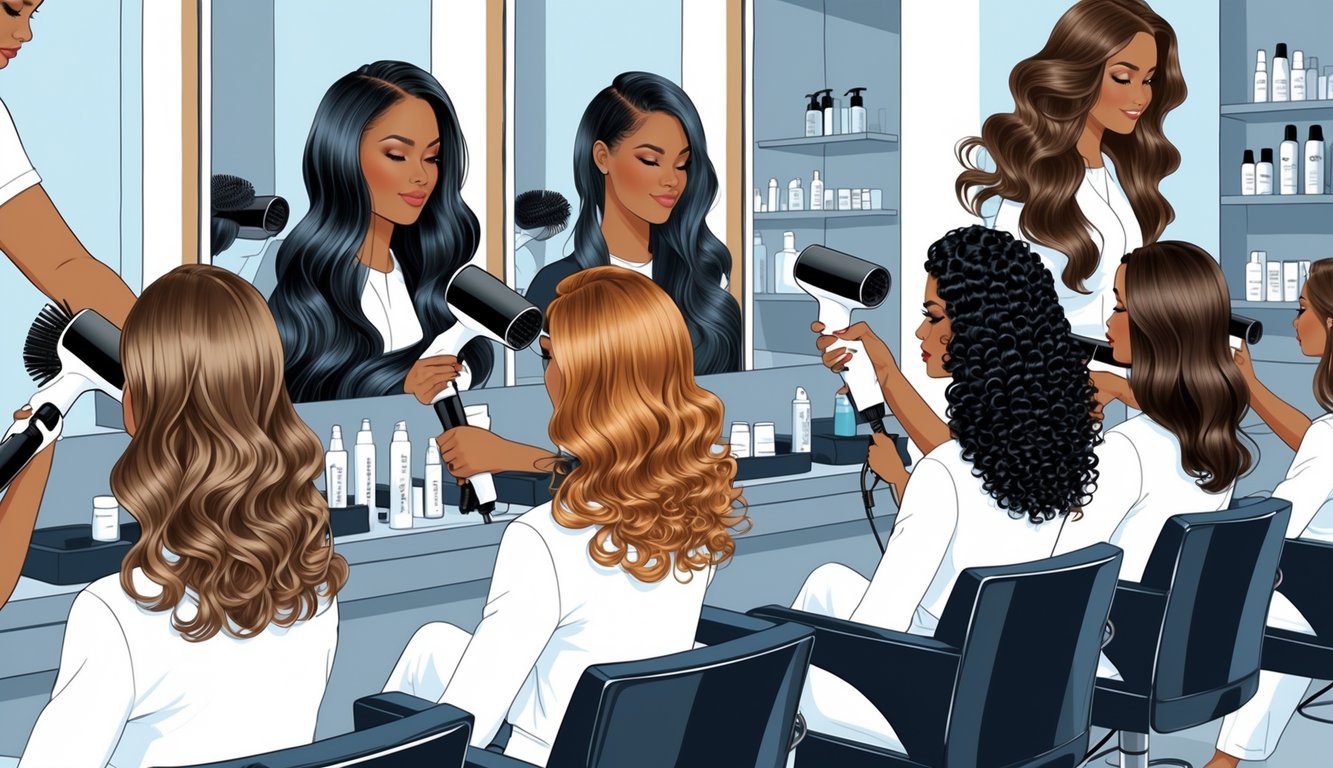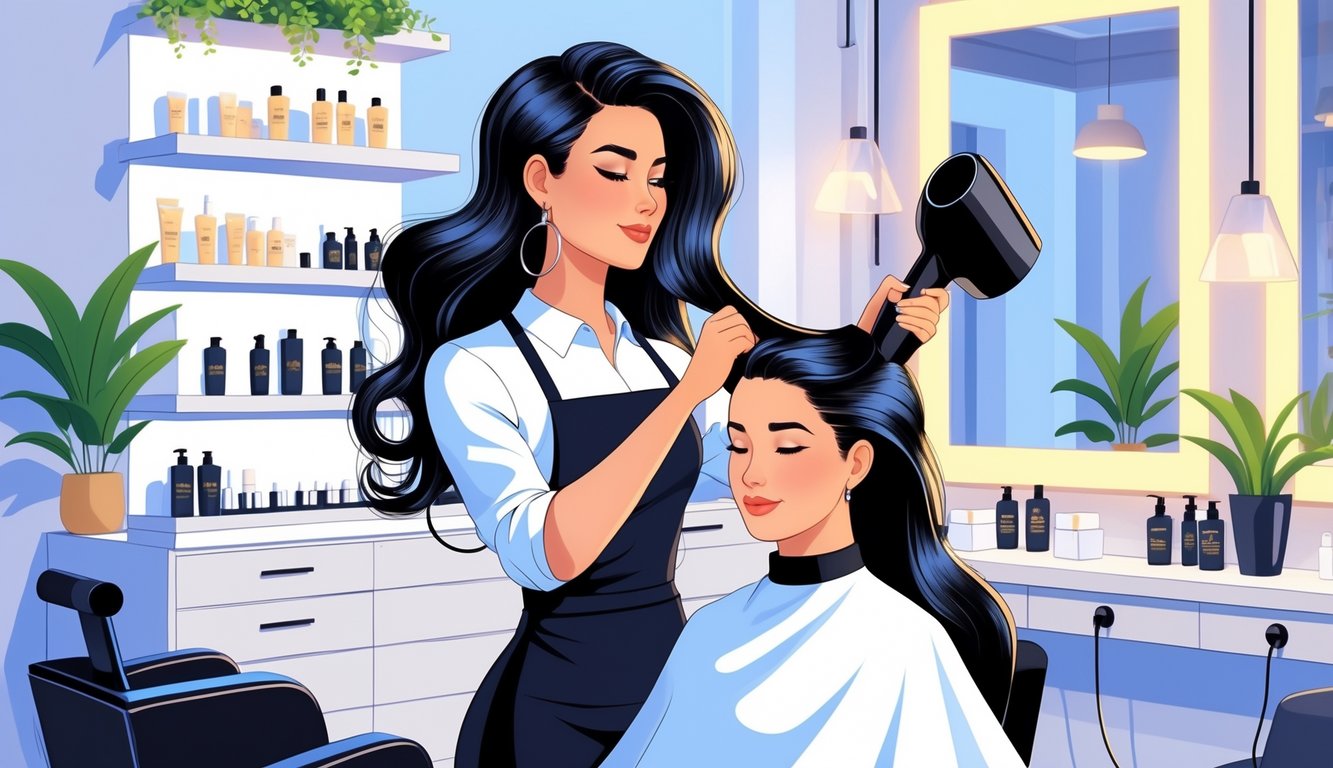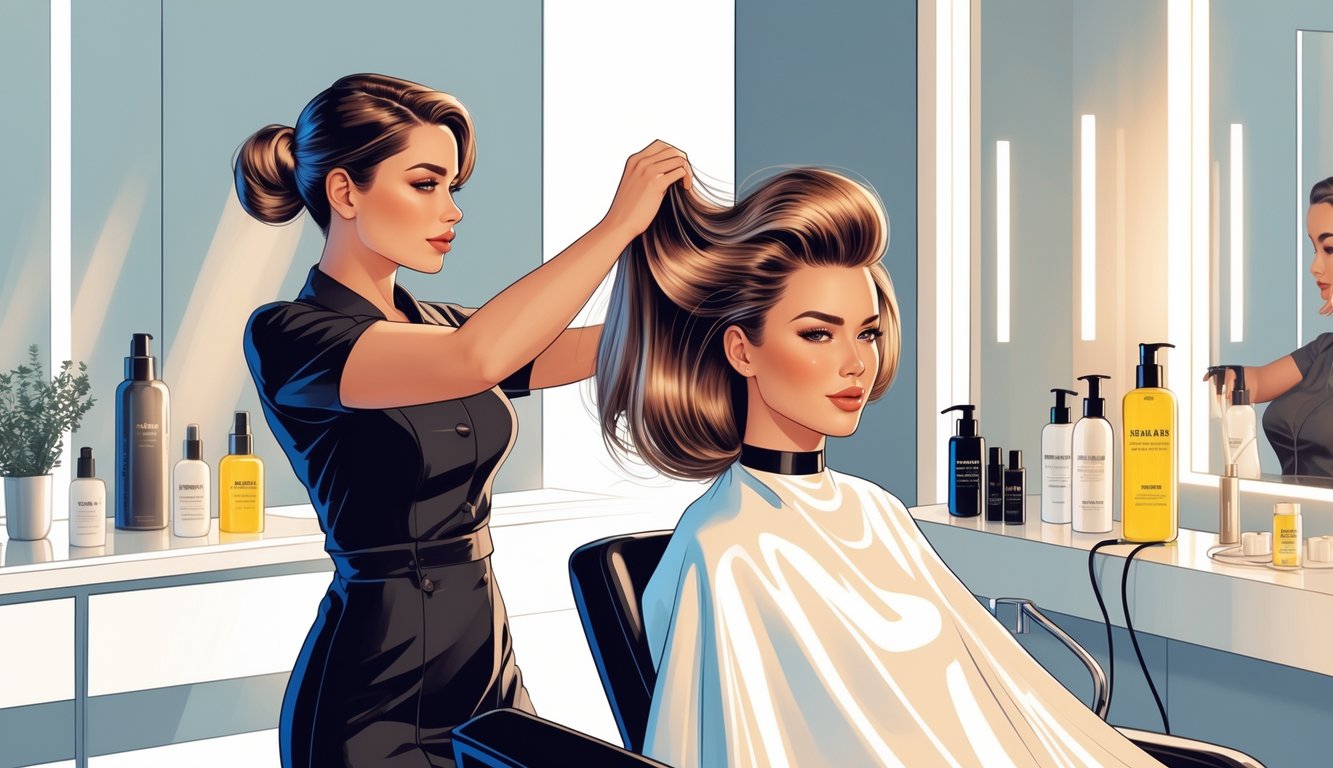Professional Blowout Secrets Stylists Rarely Share With Clients
Adapting Blowouts to Different Hair Types

Every client thinks they want volume or frizz control or to magically transform limp ends—like, did you bring a photo of Gisele for your chin-length bob? People really believe one brush and dryer works for everyone, which is wild when you actually pay attention to hair science.
Customized Tips for Fine Hair
Heat settings—nobody talks about them, but they’re everything. If you go max heat on fine hair, you’re just asking for a fried, dull mess. I use a root-lifting spray with protein (not mousse, unless you like helmet hair) and start upside down. Gravity is free.
My paddle brush has vents. I point the nozzle down, not all over the place—keeps the cuticle smooth and avoids that brittle, snapped look. Clips are a must; otherwise, the top flattens before I even get to the back. Pro stylists on these blogs say to cool shot every section, but honestly, if it feels too hot, I just pull the dryer away and hope for the best.
Overdrying ruins bounce, every time. Sometimes I spritz a shine spray at the end, but half the time I forget and just hope the weather isn’t humid.
Best Practices for Curly and Textured Hair
People yank round brushes through curls like it’s a crime scene, then freak out about frizz. I don’t get it. Rough-drying curls is never a good idea. Unless you want a frizz halo, I guess. I start with damp hair and a ton of slip—creamy leave-in or argan oil serum, nothing with alcohol (learned that the hard way).
Biggest shortcut: diffuse first, low speed, medium heat. Then, only smooth the bits you want with a boar bristle brush. Too much heat? You’ll fry the curl pattern, and nothing brings it back. Stylists on Haiirology say finish with a cold shot, but if humidity’s high, honestly, good luck.
Frizz control is about layers and, weirdly, not touching your hair when you’re done. People always want to fluff it up, and then wonder why it goes puffy. Just leave it alone for a bit—sometimes you’ll get actual shine, sometimes not.
Secrets for Long-Lasting Salon-Quality Results

Trying to get a blowout to last more than a day? Nightmare. Everyone’s obsessed with “salon quality” but never mentions how you’ll be late for work, elbow-deep in round brushes, cursing your life choices. It’s not just silk pillowcases and hope.
Maintaining Your Blowout Overnight
Every morning, I wake up and it’s like—what did I do to deserve this mess? Gravity and my pillow hate me. Cotton pillowcases? Useless. Stylists swear by silk or satin—my hair slides around instead of knotting up (Rachel Flowers from Biolage says so, and she’s done more blowouts than I’ve had hot dinners).
Some people twist their hair into a loose topknot with a scrunchie—no creases, supposedly. Then there’s the “pineapple”—all your hair flopped forward, which looks ridiculous but kind of works for volume or curls. Loose French braids? I get soft waves, unless I forget and wake up looking sideways. Don’t touch it in the morning. More you mess with it, faster it dies. Keep hands dry, skip oil. Also, apparently, a cooler bedroom helps—heat just melts the style. Found that out the hard way after a sweaty summer and limp hair by 8am. If you can sleep in rollers, I honestly envy you.
Touch-Up Techniques Professionals Swear By
Greasy roots? Dry shampoo is my panic button. But you can’t just blast it everywhere. Section, spray, let it sit, then rub it in—otherwise, chalky mess. I used to nuke my whole scalp, now I just target the crown and nape. Sometimes I hit it with a cool shot, which weirdly resets the volume.
If my blowout’s falling apart, I grab a round brush and re-blow the top layer for five minutes. That’s it. Pro tip: a tiny bit of smoothing serum on the frizzy bits—don’t touch the roots unless you like stringy, limp hair. Never re-curl the whole thing. It always looks too try-hard and never matches the airy salon finish. Oh, and clarifying shampoo once a week—if your style won’t hold, it’s probably product gunk, as pro stylists keep warning. If I see someone at the gym with perfect bounce on day three, I’m suspicious. What’s their secret? Probably witchcraft.
Enhancing Your Blowout: Volume, Shine, and Smoothness

I trip over my hairbrush at least once a week, and honestly, it’s a miracle anyone gets volume, shine, and smoothness all at once. Clients complain about flat spots or weird patches, but everyone wants that impossible, glassy bounce. Flyaways? They’re always back, no matter what I do. Here’s what actually happens—messy routine, questionable products, and a lot of crossed fingers.
Shine-Boosting Tips and Products
Chasing shine is basically a sport. Too much serum and everything’s greasy. The only time I got real gloss was after using a featherlight shine serum on barely-towel-dried hair—not that soggy mess people try to detangle. Stylists at Mason Anthony swear a cold blast locks in shine. Sometimes it works, sometimes my arm falls asleep.
Supposed to go like this:
- Heat protectant first (skip it and you’ll regret it)
- Blow-dry in sections, always aiming down—if you go up, you’re just roughing up the cuticle
- Micro-dot of argan oil or shine serum, rubbed between palms, then barely touch mid-lengths to ends. Roots? Don’t even think about it.
Sometimes I use a dry texture spray at the roots for volume, or dry shampoo if I want that matte look. Is shine ever consistent? Not in my world.
Controlling Frizz Like a Stylist
Some days I just give up on frizz, and those little baby hairs mock me. If you skip a lightweight oil or anti-humidity spray, dryness wins. Revlon’s pros say use a tiny round brush for root lift on short hair; I usually just grab the nearest paddle brush and hope for the best.
My biggest anti-frizz move: don’t over-dry. If you wait until every last drop of moisture is gone, static takes over. I tell clients: always aim the dryer down, never swirl it. Once I forgot conditioner, and my scarf made my hair float like I was in a science experiment.
Bonus hack: rub a dryer sheet over your hair in winter. It’s weird, but it helps. Humidity sprays, silicone drops, anti-static balms—they all kind of work, except when the weather decides otherwise. If anyone’s got a real fix for frizz, let me know, because I’m still searching.



